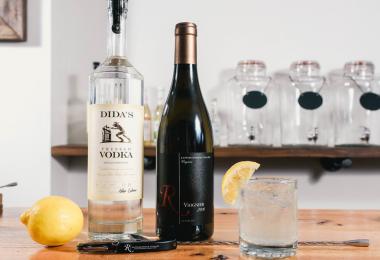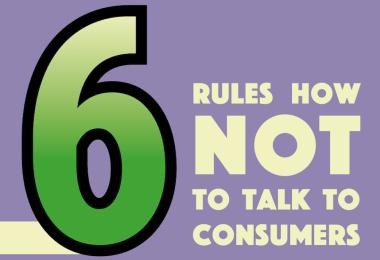Everybody has heard stories about – and probably been guilty of – saying something in a foreign country that might sound fine at home, but which translates into something very different, or even insulting, in another language. But being embarrassed on an individual basis is one thing – being embarrassed on a corporate level is quite another.
Today, when everything can be checked, double checked, or even Google translated, there is no hiding place.
Brave new world
Wine producers and generic bodies are having to go to increasing lengths to ensure they have the right message for the right consumer in the right market.
“One size definitely does not fit all,” says Bernard Fontannaz, founder of South Africa’s Origin Wine, which has international brands such as Fairhills and Stormhoek. “Asia is a completely different ball game to Europe. But even within Europe, Holland is very different to the UK. It is less price-driven and more willing to try and find ways to build a brand,” he explains.
For a brand to work across many continents and cultures requires a completely different way of thinking for the traditional wine company, claims Mark Hely, export director of Australia’s McWilliam’s Wines. “The wine companies that are winning are consumer-lead, not product-lead,” stresses Hely.
To have any chance of knowing what message is going to be right in different countries, you need to have a true understanding of the core values and DNA of your brand, claims Andrew Maidment, who heads up Wines of Argentina both for Europe and Asia. “Part of what we do will work everywhere,” he explains. “So it is not a case of ripping everything up and starting again as that would get confusing.”
Stuart Purcell, creative director at Cedar, a specialist publishing business that creates international content for companies like Tesco and British Airways, questions whether all brands have the ability to work in all markets. He asks: “Does the brand DNA run deep enough to cross international waters and boundaries? Is the ‘code’ of the brand strong enough and represent sufficient material in the proposed territory to actually work?”
The key, says Bela Szabo, strategy and innovation director of global advertising agency, DDB, is to understand the “operating principles” for your brand; that is, the common narrative which runs through everything the brand is about.
Paul Houlding, managing partner of isobel advertising agency, was faced with that challenge when developing “The More You Look The More You Discover” global advertising campaign for Bordeaux’s wine marketing body, the CIVB. “When looking internationally, you have to decide what makes that brand unique,” he explains. Once you know the “spirit of the brand” the next challenge is “identifying the audience” and “creating a campaign that is flexible enough to be used in each market,” he says.
Maidment agrees there are aspects to a brand’s values that should work in any market. But Argentina could not have done a Bordeaux-style campaign in Asia as “we are at a different stage of awareness about what Argentina is there compared to Bordeaux”. Instead it needed to play a lot more on the stereotypical image of Argentina. “So for China we would look to play on football and Lionel Messi as that is all they know about Argentina.”
Hely says brands need to be aware that “the target audience for that brand could change dramatically in different markets” between age groups and genders.
There is not one winning approach, stresses Hely. Wines, for example, based on the family, the tradition and the heritage of where they come from do not have to do so much work in different markets, he argues.
But the growing number of lifestyle brands, like McWilliam’s’ Expressions range, have to be tailored to the different lifestyles of the local market.
All of which requires specialist local knowledge. In the heyday of global advertising in the ’80s and ’90s major advertising agencies would have local offices all over the world. Not any more, says advertising executive, Mark Fiddes, co-founder of IdeaMotel, that helps create international campaigns. Now an agency will come up with a concept or execution that specialist, individual agencies will then tweak and adapt to their local market, he says. “Their skill,” adds Fiddes, “is making your product fit in with the everyday conversation taking place with your target consumer group in that country.”
For example, Inés Menéndez de Luarca, of ICEX Spain Trade and Investment, says its overall message is to demonstrate the versatility of its wines and then relies on its local economic and commercial offices to determine which of those wines, in which channels and which types of consumer are best to target in each country. Fontannaz’s approach is to listen carefully to what local retailer buyers are saying. “They are usually very close to what consumers are doing and looking for,” he says.
Closer the better
The most successful brands in the future will be the ones that can “read cultures better” in different countries, says Szabo at DDB.
It’s not enough to have a superficial understanding of a market’s cultural differences. It’s important that the language and messaging you use is as authentic as it can be, urges Purcell. “There are a host of visual guidelines concerning how the same image may be offensive or tolerated depending on your stance. Pigs, cows, nudity, people smoking, religious symbols, protest symbols, flags, borders can all be in need of specific treatment – or deletion.”
Wines from Spain, for example, could not use one of its campaigns in China, as it featured artwork with large white backgrounds which has negative connotations there. Purcell also urges companies to look at every detail down to the type and size of font being used.
Maidment agrees: “For China we had to buy specific fonts that represented the Chinese characters we wanted to use in the right way,” he explains.
Robin Copestick, co-founder of Copestick Murray, who has seen its i heart brand distributed in 25 countries, says it is equally important to be aware of cultural differences even in your own country. “We would not try and sell a i heart Manchester United wine near Liverpool,” he adds.
Bordeaux wines
The challenge for advertising agency isobel was to create an international wine campaign for Bordeaux wines that could work in any market which also adhered to strict French advertising laws. As it is forbidden to use people to advertise alcohol in France, isobel used illustrations to target its target audience of experienced wine drinkers looking to explore new areas. Hence the tagline: “The More You Look The More You Discover”.
The illustrations were created to reflect the different wine cultures where the campaign would run and how Bordeaux wines are perceived in that market. By having different illustrations local offices could choose the ones most suited to their culture. For example, one illustration showed a bottle of wine being picked up by chopsticks, which worked well in China. But it could not be used in Japan where it is seen as bad luck to pick up anything with chopsticks other than food.
I Heart Wine, Copestick Murray
One of the biggest recent global branded wine success stories has been thei heart brand, which uses the i heart New York-style logo to promote different wine varieties (i heart Pinot Grigio etc).
Robin Copestick, managing director of Copestick Murray, says the brand is always looking to fit comfortably in to its local market. “We definitely adapt both message and approach to different markets, but we always try and maintain key brand values to individual markets,” he stresses. “We have created a special edition wine for i heart wine for China, the US and Australia.”
Concha y Toro: Wine Legend campaign for Casillero del Diablo
Concha y Toro, which arguably runs the biggest global promotion for it Casillero del Diablo brand, believes its ‘Wine Legend’ campaign appeals to consumers in any country because it’s based on a true story. People all over the world relate to the tale of the winery’s founder who claimed, 130 years ago, the Devil was protecting its best wines in the cellar, says Cristobal Goycoolea Nagel, marketing director for Concha y Toro in Chile. “The concept of the brand is exactly the same in all markets,” he adds, but it will look to adapt “the approach and implementation” in specific countries. This is normally around the use of media, graphics, imagery and local legal restrictions in areas such as Asia, Latin America, the US and Europe, he says.
It can’t use fire, for example, to communicate alcohol in France or Sweden, or the link with sport and its sponsorship of Manchester United in Mexico and Costa Rica.








